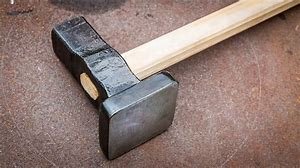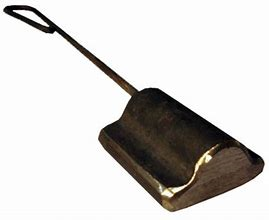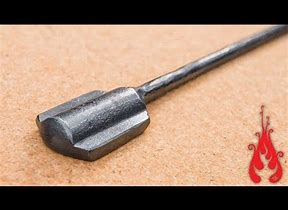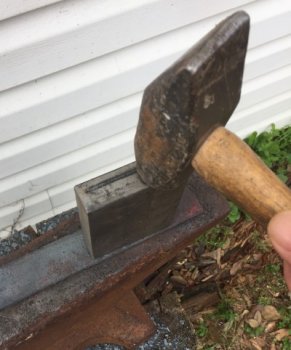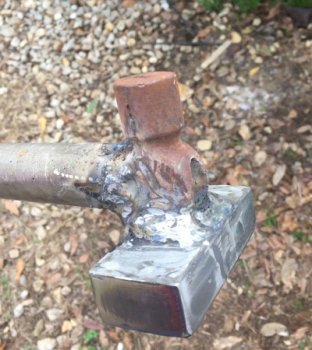OK folks, over the weekend I mentioned I was working on a new San Mai billet using .094" thickness 15N20 for core with .110" thickness 416SS for outer layers making a weld stack around .30" thick - almost 1/3 inch. The finished billet looked good and was around .280"-.290" depending on where I measured it. While forging I drew the billet out trying to thin it down some, and finally got it to around .2" thick with some hammer marks. I was able to smooth this billet more as I used a flattening bar - that flattening bar works! Thank you Chris. Put on surface grinder and did some grinding, billet cleaned up pretty good around .150", that's .025" removed from each side. Doesn't seem too bad. I profiled a knife blank and looks like there are no visible delams.
I ground bevels in leaving edge pretty thick for me. Did the HT in Canola oil. This is the final blade after it's HT'd, beveled, and sanded to 1200 grit. Both sides where etched in a 3:1 mix of FeCl for about 5 minutes. Here is the side that was just cleaned being careful not to remove the black oxide from 15N20 core.
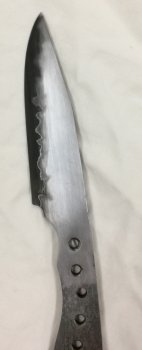
Here is other side where I sanded total blade with 1200 grit removing all the black oxide. I suspect for a kitchen knife it would be hard to keep the black oxide layer after much use and this is how it would look. Any guidance on how to keep the black oxide looking dark? That rough edge isn't a delam, just showing the carbon migration that happens with low carbon SS for outer layers, and perhaps etching make it a bit rough also.

I ground bevels in leaving edge pretty thick for me. Did the HT in Canola oil. This is the final blade after it's HT'd, beveled, and sanded to 1200 grit. Both sides where etched in a 3:1 mix of FeCl for about 5 minutes. Here is the side that was just cleaned being careful not to remove the black oxide from 15N20 core.

Here is other side where I sanded total blade with 1200 grit removing all the black oxide. I suspect for a kitchen knife it would be hard to keep the black oxide layer after much use and this is how it would look. Any guidance on how to keep the black oxide looking dark? That rough edge isn't a delam, just showing the carbon migration that happens with low carbon SS for outer layers, and perhaps etching make it a bit rough also.

Last edited:

